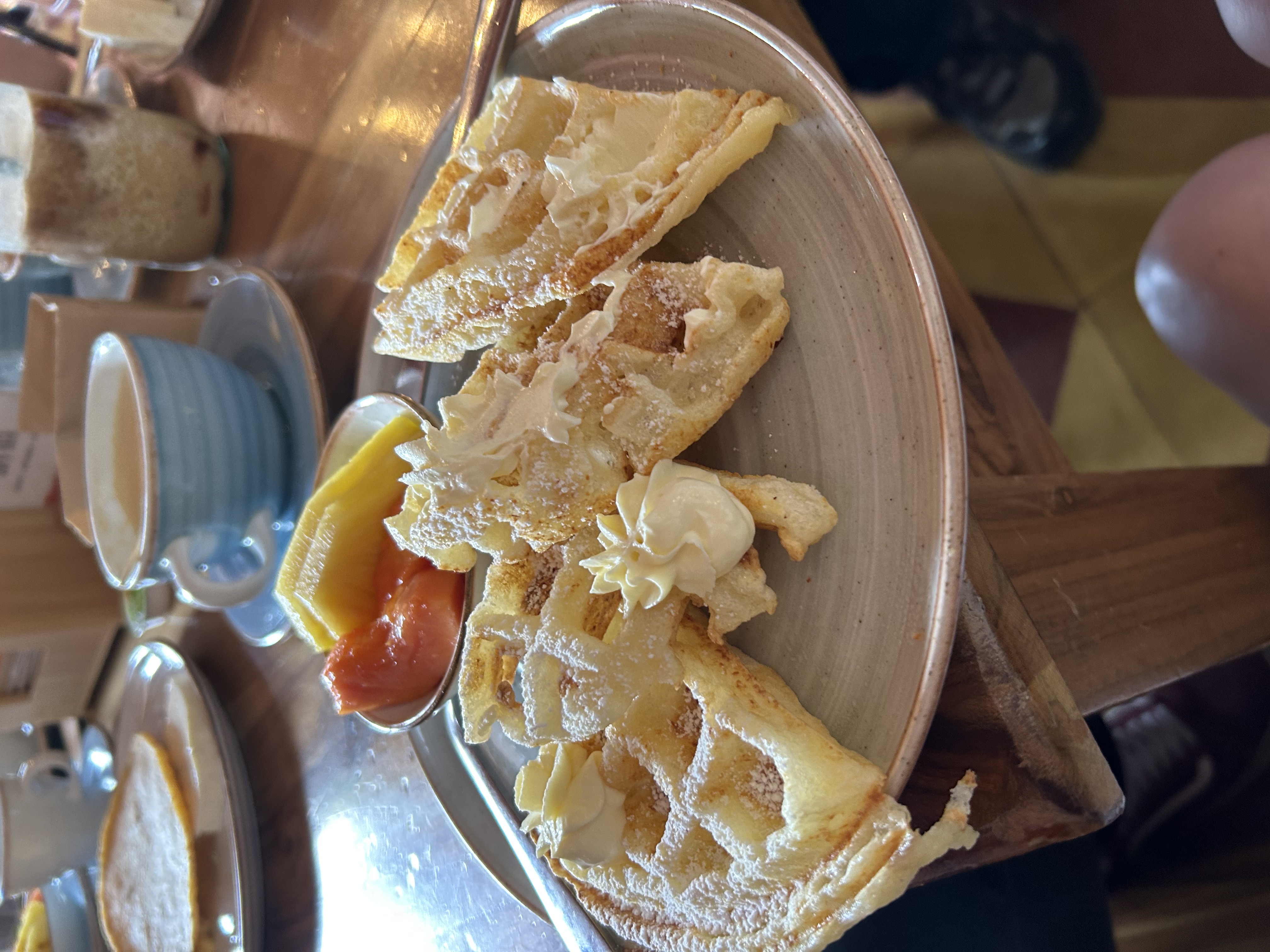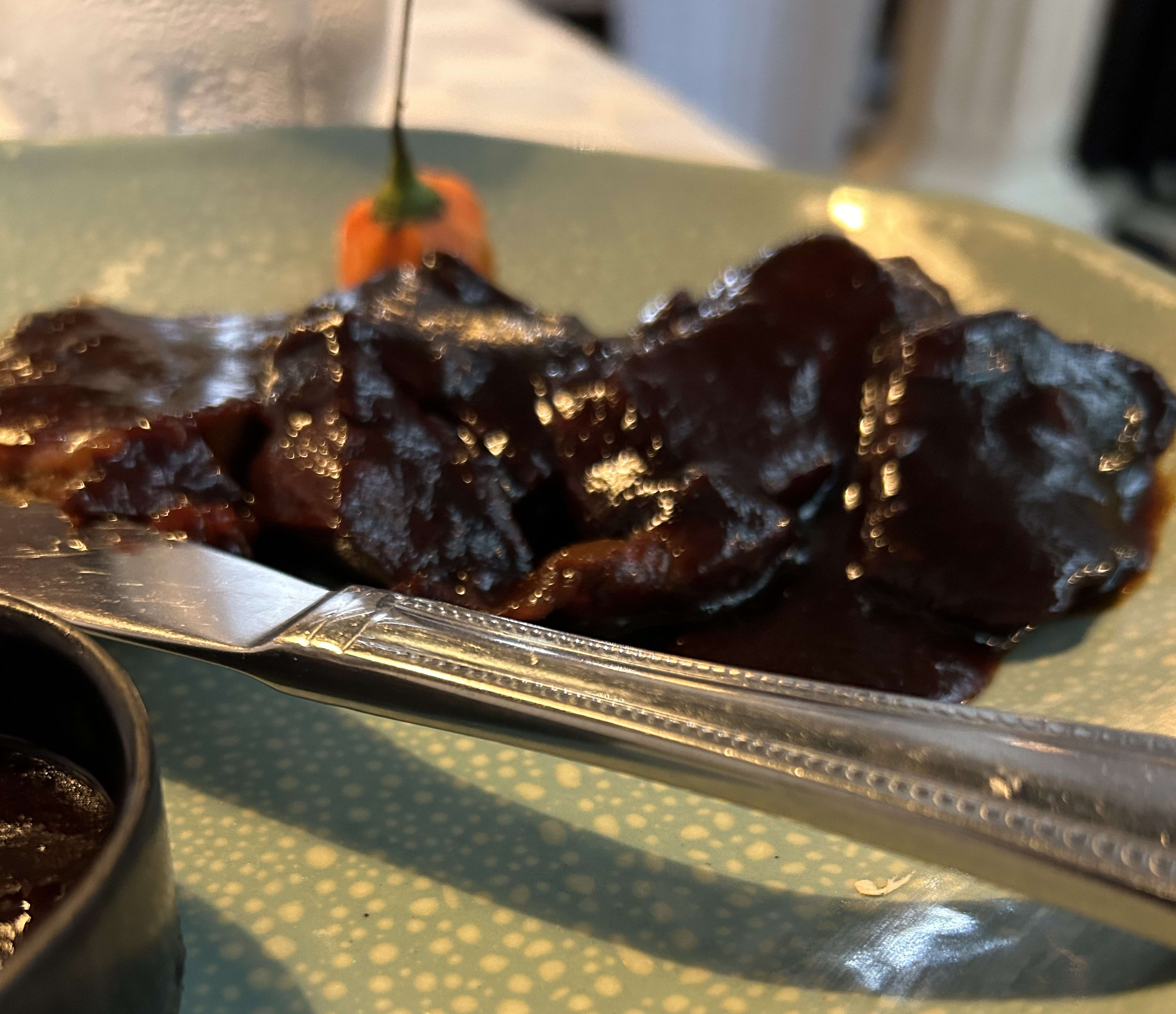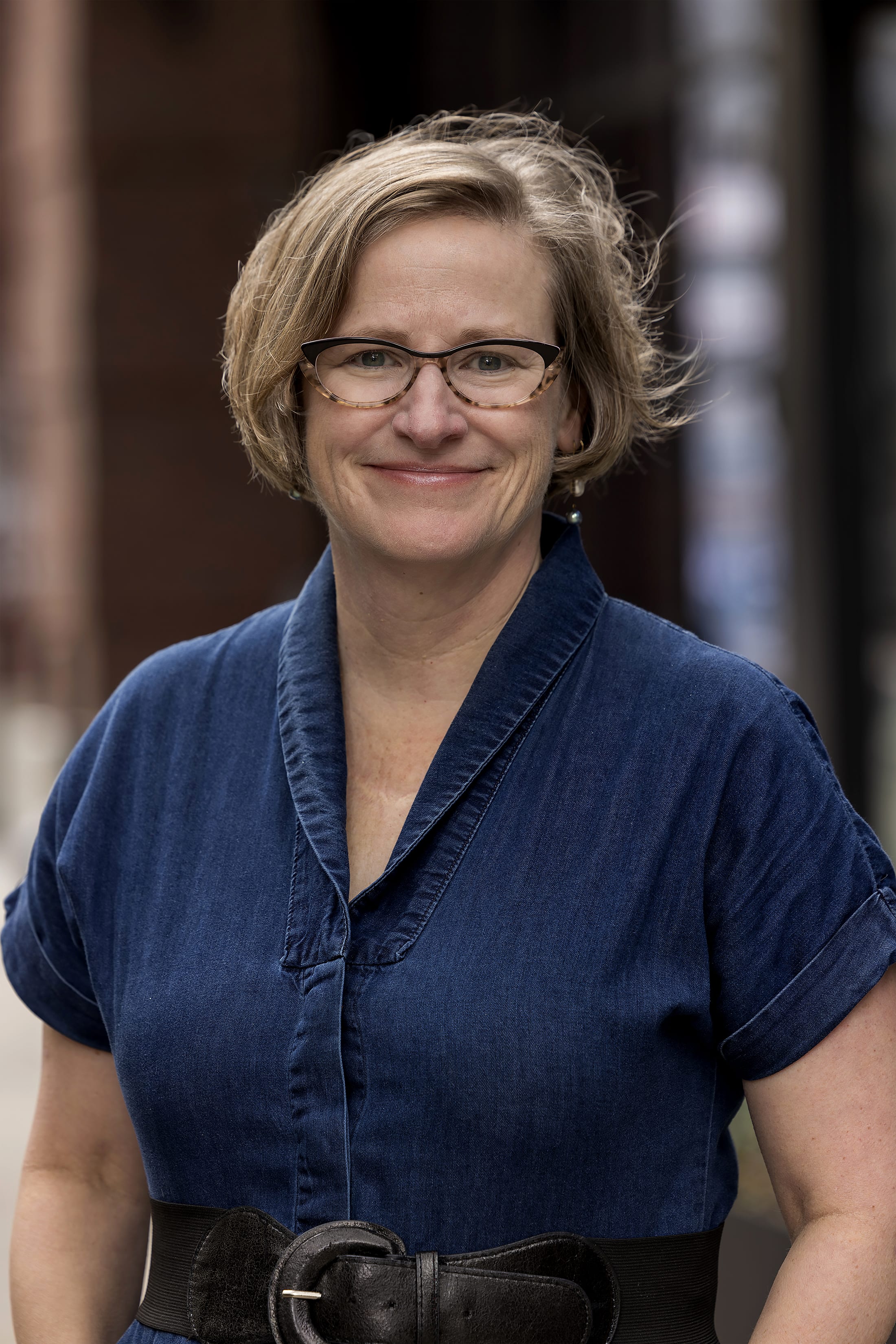
Curator’s statement
Colombia is a country where situational awareness (paying attention to your physical safety) is important, as reflected in the travel advisories issued by many governments. That said, it’s a fantastic destination — full of beauty and culture — provided you choose your destinations and transportation wisely. In that sense, it’s similar to how travelers with special dietary needs plan ahead and know where they might go for safe nutrition. The good news for those on a gluten-free diet: Colombia is one of the safest and most accommodating gluten-free destinations I’ve ever eaten!
The Fora Difference
Book with Nancy to access exclusive perks and experiences on your trip.
Killer perks
Free upgrades, spa credits and more—we got you
Personalized recs
Customized travel planning for your style
Insider knowledge
Expert advice from people who’ve actually been there
Where to stay in Colombia
Unlock perks by contacting Nancy to book your trip.
How to eat gluten-free in Colombia

Pan de yuca waffles - Café Don Rafa - Jericó, Colombia
It's relatively easy to eat gluten-free in Colombia for several reasons rooted in its traditional diet and food culture.
Staples are naturally gluten-free
Colombian cuisine relies heavily on naturally gluten-free ingredients like:
Corn (maíz): Used in arepas, empanadas, tamales and more.
Rice: A central part of many meals.
Plantains: A starchy banana. When still green, served fried and when ripe, served sweet
Yuca (aka: cassava or manioc): Served like potatoes but a bit more fibrous.
Potatoes: Common carbohydrate source.
Beans and lentils: Often served as both a main protein source or side.
These ingredients form the basis of many traditional dishes, reducing reliance on wheat-based products.
Traditional bread is naturally gluten-free
The three main breads of Colombia are arepas, Almojábanas and pandebono.
Arepas: Flat, round cakes made from ground maize or precooked corn flour.
Texture/flavor: Can be grilled, baked or fried; soft inside, crisp outside.
Use: Eaten plain, with butter or cheese, or stuffed with meats, eggs or avocado.
Almojábanas: Soft, round cheese breads made with cuajada (fresh cheese) and cornmeal or flour.
Texture/flavor: Light, airy, slightly sweet and cheesy.
Use: Often enjoyed warm for breakfast or as a snack with coffee.
Pandebono: A chewy, slightly tangy cheese bread made with yuca flour (cassava), cheese and cornmeal.
Texture/flavor: Crisp on the outside, soft and chewy inside, with a pleasantly cheesy flavor.
Use: Typically eaten fresh and warm, often for breakfast or as a snack.
National dishes are naturally gluten-free
Bandeja Paisa is a hearty and iconic Colombian dish from the Antioquia region, and it can be naturally gluten-free when made with traditional ingredients. It features a generous platter of grilled steak, chorizo, fried pork belly (chicharrón), red beans, white rice, fried egg, avocado, arepa and sweet plantains — a rich, flavorful combination that’s both satisfying and deliciously gluten-free when no processed sauces or seasonings are added.
Posta Negra or Posta Negra Cartagenera is a rich, slow-cooked beef dish from Cartagena, simmered in a savory-sweet sauce made with panela (raw sugar cane), spices and, sometimes, cola. Naturally gluten-free when made traditionally, it’s both tender and full of deep, complex Caribbean flavors. It is served with naturally gluten-free sides of coconut rice, plantains, yucca and avocado.
Colombian merengón is a traditional dessert made of crispy meringue layers filled or topped with fresh whipped cream and fruits, most commonly guava (bocadillo), strawberries, mango or passionfruit. It’s light, airy and sweet — similar in concept to a pavlova, but with a tropical Colombian twist.
Things to do in Colombia
In Medellín, Comuna 13 was my favorite stop. It is accessed by the brilliant utilization of ski-lifts as public transportation to the sloped neighborhood, which was organically constructed without roads. Comuna 13 is a vibrant neighborhood, renowned for its colorful street art, break dancing, resilient community and rich cultural heritage. Once plagued by violence and isolation, it has transformed into a symbol of urban renewal and social activism, attracting visitors worldwide to experience its dynamic atmosphere and artistic expressions. I chose a political tour with a driver (surrounding neighborhoods are not necessarily safe) which took me to sensitive sites highlighting the tragedies on both sides. Much better insight into the real Colombia than an episode of "Escobar."
Jericó is my favorite Colombian town. Feeling like the backdrop of Lin-Manuel Miranda’s movie “Encanto,” Jericó is a picturesque town nestled in the mountains of Antioquia, known for its colorful colonial architecture, vibrant flower-filled balconies and deep religious and cultural heritage. As the birthplace of Colombia's only canonized saint, Santa Laura (patroness of orphans and those facing racial discrimination), it blends spiritual significance with stunning landscapes, coffee culture and small-town charm.
Cartagena de Indios is a captivating coastal city where centuries-old colonial architecture, vibrant Caribbean culture and historic fortresses come together within its beautifully preserved walled city. With its lively plazas, colorful streets, nearby islands and rich blend of history and modern charm, Cartagena offers an unforgettable experience for every traveler. I recommend a guided colonial tour with a driver, which includes the common stops of Getsemaní, Castillo de San Felipe de Barajas, Plaza Santo Domingo and Convento de la Popa. For me, the Sanctuary of St. Peter Claver was a must-go inside the walled city. This 16th-century Jesuit fought for the rights of enslaved Africans. His body lies beneath the altar. He is both the patron saint of Colombia and of the enslaved and human trafficked.
Guatapé is a vibrant town famous for its colorful zócalos (decorative house panels) and the towering El Peñol rock, which offers breathtaking panoramic views after a 740-step climb. Guatapé was partially flooded in the 1970s by engineers to create the Peñol-Guatapé Reservoir, a large man-made lake designed to generate hydroelectric power for Colombia. Climbing El Peñol is not for the faint of heart — it's a steep, demanding ascent. Yet along the way, there's a beautiful spirit of compassion and encouragement. When I, living with lupus, paused to sit on a step, fellow travelers offered pats on the shoulder and sprinkles of water; at the summit, a teenager who had passed me with ease gave me a high five and pointed me towards electrolytes. After the climb, consider hopping on an electric chiva — a brightly painted, open-sided bus — for a fun and colorful ride to your next destination.
Places to eat & drink in Colombia

Restaurante CANDÉ - Posta Negra - Cartagena, Colombia
Restaurante CANDÉ in Cartagena’s Walled City (Ciudad Amueallada) is housed in a beautifully restored colonial building. It serves what is touted as one of the best Posta Negra in the area. Guests can also enjoy authentic dishes, such as ceviche, fresh seafood and the signature "Pargo Rojo Platero Frito" (whole fried red snapper), all prepared with locally sourced ingredients. As an added bonus to the cultural experience, there is live music and traditional dance performances during dinner service. IYKYK: Many people on a gluten-free diet are very aware of the location of bathrooms. This bathroom was a cultural experience, worth a stop.
Café Don Rafa in Jericó is a charming coffee shop located in the heart of the town, offering a cozy ambiance and a commitment to quality coffee. Visitors can enjoy a variety of coffee options, including almond lattes and traditional Colombian tinto. I kid you not, I had a religious experience eating their waffles (pronounced wah-flay) made from pan de yuca, for breakfast. Hadn’t had anything like it in 25 years! I circled back later in the day for merengón. I nearly kissed the waiter, it was so good.
El Fogata in Guatape offers a delightful selection of traditional Colombian grilled dishes with a scenic view of the Guatapé Reservoir. Their Bandejo de Paisa is often touted as the best in the country and rumor has it, they will make a vegetarian version. Guatape pro tip: I would highly suggest comfortable clothes for the climb of the rock and an elastic waistband for the digestion of the huge platter of meat and carbs!
Need to know
In urban areas like Bogotá, Medellín and Cali, there’s increasing awareness of dietary restrictions, including gluten sensitivities. Mauka Pan de Sago is hands-down the best gluten-free packaged bread off of a store shelf I have ever had, with Neruda pan sin gluten a very close second. I purchased both at Carulla. I’ve fallen in love with the ingredient sago (new to me), which is from the center of a palm leaf. I even bought a new suitcase so that I could bring a case home to put in my freezer!
Worth noting: With all of these wonderful options, don’t let your guard down. Advocate for yourself, reiterate your needs and communicate about hidden gluten and the problem of cross-contact / contamination.
Here is a good script:
"Your food looks so good and I really want to try it. I have a medical condition called celiac disease and must follow a strict gluten-free diet. This means I cannot eat anything that contains wheat, barley, rye or oats, or anything that may have been contaminated with gluten (even in small amounts). Sometimes gluten is hidden in premade ingredients like soy sauce and broth. My food cannot be cooked with the same utensils, surfaces or oils used for foods that contain gluten. Can you, please, help me find a safe option on your menu? Thank you so much!"
"Tu comida se ve deliciosa y realmente me encantaría probarla. Tengo una condición médica llamada enfermedad celíaca y debo seguir una dieta estricta sin gluten. Esto significa que no puedo comer nada que contenga trigo, cebada, centeno o avena, ni nada que haya sido contaminado con gluten, incluso en pequeñas cantidades. A veces el gluten está escondido en ingredientes preparados como la salsa de soya o el caldo.
Mi comida no puede ser cocinada con los mismos utensilios, superficies o aceites que se usen para alimentos con gluten. ¿Podría, por favor, ayudarme a encontrar una opción segura en el menú? ¡Muchas gracias!"
Word to the wise: Just in case, consider carrying toilet paper in your bag with you wherever you go. TP is not a given. You might need to find or purchase some before hitting the lavatory.

Travel Advisor
Nancy Sherry Baker

Get in touch with Nancy
Did you like this guide? Reach out to customize and book your own experience. Or, just to chat about travel in general.
You can expect a response from Nancy within 1–2 business days. You’ll also be subscribed to our traveler newsletter (you can unsubscribe at any time).
For more inspiration and insider recommendations, visit our Colombia page.